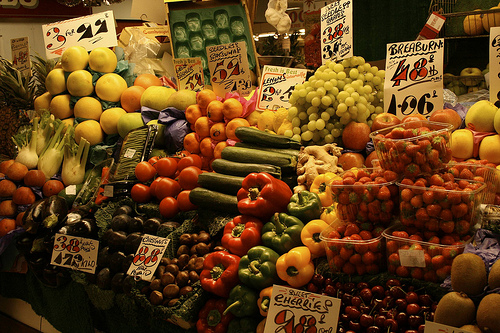1.3 billion tonnes of food wasted each year, says UN study.
As much as 1.3 billion tonnes of food is wasted each year, meaning huge amounts of resources are used in vain and large quantities of greenhouse gases are emitted needlessly, according to a new UN study. Much of the waste comes from the developed world, bringing the debate surrounding supermarkets selling of only good looking food.

 As much as 1.3 billion tonnes of food is wasted each year, along with huge amounts of resources used in production, says a UN study.
As much as 1.3 billion tonnes of food is wasted each year, along with huge amounts of resources used in production, says a UN study.
This loss of almost a third of all food produced for human consumption, not only equates to a waste of resources including water, land and labour, but also mean needless emitting of greenhouse gases during agriculture, contributing to climate change.
The report found 222 million tones of waste are produced each year in rich countries, almost the same amount as the entire net food production of sub-Saharan Africa, and asks the question, should supermarkets sell ugly food?
Making the distinction between food loss – taking place in the production and harvest of food, and in post-harvest and processing stages – and food waste – taking place at retail and consumer stages, finding 40 per cent of richer countries waste came at these later stages.
This is due to consumers and retailers throwing away edible food products. The highest levels of waste are seen in higher income families, blamed on poor planning, over-sized ready meals and restaurant buffets, and promotions, with all promoting buying more than is needed.
However, the need for supermarkets to sell the best looking food is also highlighted as a problem. With surveys showing consumers would be willing to buy imperfect food, the report promotes farmers selling directly to markets and consumers, where the appearance level does not need to be so high.
The report also highlights a need to find good use for the food thrown away, for example charity organizations could work with retailers to collect the products disposed of which are still safe and nutritious.
It also highlights education and initiatives to change consumer attitudes. Rich consumers should be taught that throwing food away is unnecessary.
In developing countries a different picture emerges, where 40 per cent of losses occurring at the post-harvest and processing levels.
Reducing loses in these areas, through a better transport infrastructure and increased use of technology – for example fridges – would impact both livelihoods and food security. The report highlights that these losses translate into a loss in income for small farmers and higher prices for consumers.
The report called for a strengthened food supply chain in developing countries, assisting farmers to link directly to buyers and investing more in the infrastructure surrounding agriculture.
The report was produced on behalf of the UN Food and Agriculture Organisation by the Swedish Institute for Food and Biotechnology.
Image: Naughty Architect | flickr





_400_250_80_s_c1.jpg)
